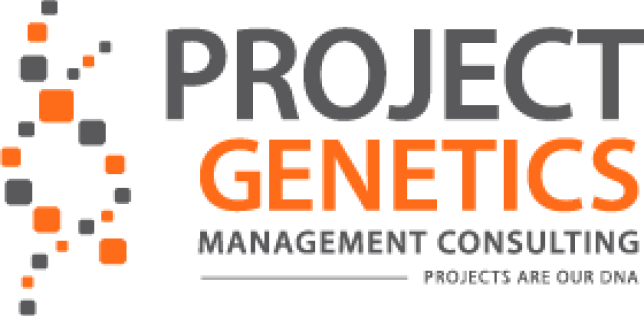On today’s show we discuss how to uncover untapped potential in your team.
Dr. Clint Ladine is a leadership and success coach, author, and former professional basketball player. His clients include renowned restaurateurs, super bowl champions, and C-suite executives. He has delivered coaching leadership development programs in both the profit and not-for-profit realms and he is the author of Power Coaching: Stand Out, Get Unstuck, And Energize Your Leadership.
Clint’s credential include a Master’s degree in leadership and a Doctorate degree of Strategic Leadership and Executive Coaching from Bethany University. He hold more than 13 years of organization development and executive coaching experience. He previously founded a health clinic in San Francisco and played professional basketball overseas.
Clint lives in San Francisco with his wife of 27 years and five kids and has served as the president of the North of Market Community Benefit District, a non-profit organization helping to beautify, enhance safety and foster the arts in the Tenderloin district of SF. He is currently serving on the Stonestown YMCA Board of Directors as the chair of the fundraising committee.
How does coaching in basketball relate to coaching in corporations?
- Coaching is about maximize potential to ensure the teams are working cohesively.
- One of the jobs of a basketball coach is to manage egos and get people to work together in the best way, similar to a corporate coach.
How do you help a team work together?
- You want to help people understand their why.
- In every team there’s an underlying why in the human condition that causes people to act in certain ways.
- When you look at those emotional levers that people have to succeed or be the best in their area you want to help them to understand that underlying why and tap into that corporate/community part as well.
- Want to help them understand their why in relation to how it helps the community or corporation as whole.
What type of things get in the way of coaching or people reaching their potential?
- Many times it the ego. Or I can do it alone mentality. This hinders people because there’s a greater impact we can have together.
- To work through this, you can teach that with humility and bringing people together everyone can be successful.
- This is where coaching people toward an abundance mentality comes in to play. There’s enough for everyone.
Do you think leaders still need to be the smartest in the room and know it all? Is that the right philosophy? And do you think that mentality still exist today?
- This mentality still exists today, however successful leaders exercise humility.
- They want their direct reports and team mates to excel are the ones that see people stay long term and increase in productivity and employee engagement.
- For leaders, humility is the highest skill set. If they develop that skill they will see their teams succeed wildly.
What role does leader vulnerably play in building teams?
- Vulnerability plays a big part of leading. If you want to know others, you need to be known.
- A leader is leading the charge, they are guiding people in to uncharted waters, so they should do the same with being vulnerable. Leaders can show the way.
- Start with being vulnerable in small chunks to build trust. i.e. share a mistake
- It builds engagement with staff and drives team cohesiveness.
- Being vulnerable might not always go as planned but it is important for leaders to put themselves out there and try.
What are other key attributes of team cohesiveness?
- Wanting others to succeed.
- Know your team and know their emotional levels and personal why’s.
- When you know everyone’s personal whys you can connect better. I.e. communication, recognition.
- When people feel heard and seen they will be more engaged in the organization success.
Signs of an unhealthy team:
- People taking credit for success individually.
- Shucking responsibility for mistakes.
- No small talk between team members (no visual comradery).
What do you do with a toxic team member?
- Have a crucial conversation with team member – in a one-in-one setting ask them questions to try to understand more about where the team member is coming from:
- What do you love about our team interactions?
- What has been a highlight for you?
- What are your pain points right now?
- What could we do better?
- What can I do as a leader to better motivate you? Could reveal a blind spot for the leader.
What are limiting beliefs?
- Beliefs that prevent you from executing your full potential.
- One way to identify a limiting belief is to look for the word because. For example: “we possibly couldn’t expand into this county because I’m not talented enough to lead this charge.” The because is usually not true.
- Often, we have built up beliefs in our lifetime and we don’t even know they exist until we talk to a coach to unearth them.
How do you address limiting beliefs?
- Get with mentor or coach to unearth those beliefs.
- Once you’ve identified a limiting belief, take a simple action step towards conquering that belief.
- Take a small step to tackle the belief. I.e. write the first page.
What are your thoughts on affirmations?
- Highly recommended – YouTube, books, post it notes, journals etc.
- We need to hear positive reinforcement.
- Many people have never heard anyone tell them they are doing something positive in their whole life.
- People usually don’t get enough encouragement, if any at all.
- Developing these pathways for people is major. Bombard your mind with positive affirmations.
- Like a superior athlete, one of the major keys to success is that they believe they can do it.
How do make affirmations not feeling like lying to yourself?
- Find the component of truth.
- Focus on the positive.
- Focus on when things did work not when they didn’t.
- Begin to reframe and find the truth in the affirmation.
How can you bridge the gap between where you are and where you want to be?
- Take small steps.
- Don’t get overwhelmed with where you want to be.
- Take small steps toward your affirmations (hire a coach, go on a webinar, have coffee with a leader you respect).
Top 3 takeaways:
1) Hold on to your dream and vison for yourself personally and professionally. Strive for that vision.
2) Build others up. Help others fulfill their dreams.
3) Be kind to yourself. Reframe and continue to build on the positive.
Connect with Dr. Clint Ladine:
Website: https://www.successfullycoaching.com
LinkedIn: https://www.linkedin.com



